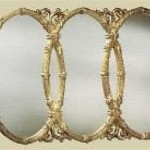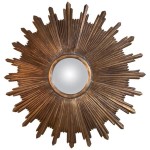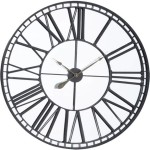Mirrors Used in Car Headlamps
Car headlamps are critical safety components, enabling drivers to see the road ahead at night and in low-light conditions while also signaling their presence to other road users. A key element within the headlamp assembly is the reflector, often referred to as the mirror. This component plays a crucial role in shaping and directing the light emitted by the bulb, maximizing visibility and ensuring compliance with road safety regulations.
Historically, headlamp reflectors were primarily parabolic in shape. A parabolic reflector possesses the geometric property of reflecting rays of light emanating from its focal point outwards in a parallel beam. This characteristic is ideal for creating a concentrated, forward-facing beam of light. Early headlamps utilized a single parabolic reflector and a light source positioned at the focal point. These systems, while functional, offered limited control over the beam pattern and often produced a less-than-ideal light distribution.
Advances in reflector design led to the development of more complex shapes, moving beyond the simple parabola. These complex or multifaceted reflectors utilize a series of smaller reflective surfaces, each precisely angled to direct the light in a specific direction. This design allows for greater control over beam shape and intensity, enabling manufacturers to optimize light distribution for different driving conditions. For instance, the low beam setting typically utilizes a broader, flatter beam pattern to illuminate a wider area closer to the vehicle, while the high beam employs a more focused, longer-reaching beam for maximum visibility at higher speeds.
The materials used in headlamp reflectors are selected for their high reflectivity and durability. Traditionally, glass with a silvered backing served as the primary reflective material. However, advancements in materials science introduced more robust and efficient alternatives. Metalized plastics, particularly polycarbonate, have become increasingly common due to their lightweight nature, impact resistance, and ease of molding into complex shapes. The metalizing process typically involves depositing a thin layer of aluminum or other highly reflective metal onto the plastic substrate, creating a durable and efficient reflective surface.
The reflective coating itself is further enhanced through various treatments and coatings to maximize performance and longevity. A protective layer is often applied over the reflective metal to prevent oxidation and degradation from environmental factors such as moisture, UV radiation, and temperature fluctuations. This protective layer helps maintain the reflector's reflectivity over time, ensuring optimal headlamp performance throughout the vehicle's lifespan.
Beyond the basic reflective properties, the reflector's design also incorporates elements that manage light scatter and glare. Precisely engineered facets and surface textures help minimize unwanted light scatter, directing the light more effectively towards the intended target area. This precise control over light distribution is crucial for minimizing glare to oncoming drivers, enhancing safety for all road users.
The integration of projector technology into headlamp systems marked another significant advancement in automotive lighting. Projector headlamps utilize a lens in conjunction with the reflector to further refine and focus the light beam. The reflector in a projector headlamp typically has a more complex shape designed to collect and direct the light towards the projector lens. The lens then focuses the light into a precise and well-defined beam pattern, offering superior control over light distribution and minimizing glare.
Modern headlamp design often incorporates a combination of reflector types and technologies. Some systems utilize a combination of multifaceted reflectors and projector lenses to achieve specific lighting characteristics. This approach allows for greater flexibility in tailoring the headlamp's performance to meet diverse driving conditions and regulatory requirements.
The ongoing evolution of headlamp technology continues to push the boundaries of performance and efficiency. New materials, manufacturing techniques, and design innovations are constantly being explored to improve light output, enhance beam control, and reduce energy consumption. Adaptive headlamp systems, for instance, utilize sensors and actuators to dynamically adjust the headlamp beam based on driving conditions, further enhancing safety and visibility.
The reflector, often an overlooked component, plays a vital role in the performance of a car headlamp. From the early parabolic reflectors to the complex multifaceted designs used in modern headlamps, this component has undergone significant evolution. The materials, coatings, and manufacturing processes employed in reflector production are critical to achieving optimal light output, durability, and compliance with safety regulations. As automotive lighting technology continues to advance, the reflector will undoubtedly remain a key element in ensuring safe and effective illumination for drivers and other road users.

Which Mirror Is Used In The Headlights Of A Car

Car Headlights

Concave Vs Convex Mirrors In Cars

Why Headlights Used Concave Mirror

Car Headlight Bulbs Explained Which Land Rover Headlights Sports Cars Luxury
What Are All The Mirrors In A Car Called Quora
Why Do We Use A Concave Mirror In Car Headlights Quora

Why Are Concave Mirrors Used In Headlights Socratic

Headlight Automobile

Close Up Detail Part Of Black Shiny Car Headlight Mirror Hood And Radiator Grille On Blurred Outdoor Background Transportation Prestige Modern Design Concept Stock Photo Adobe








